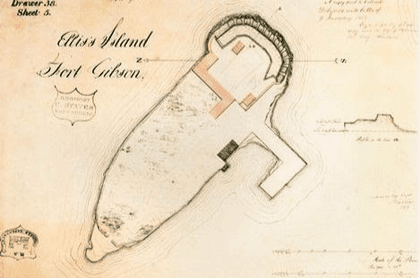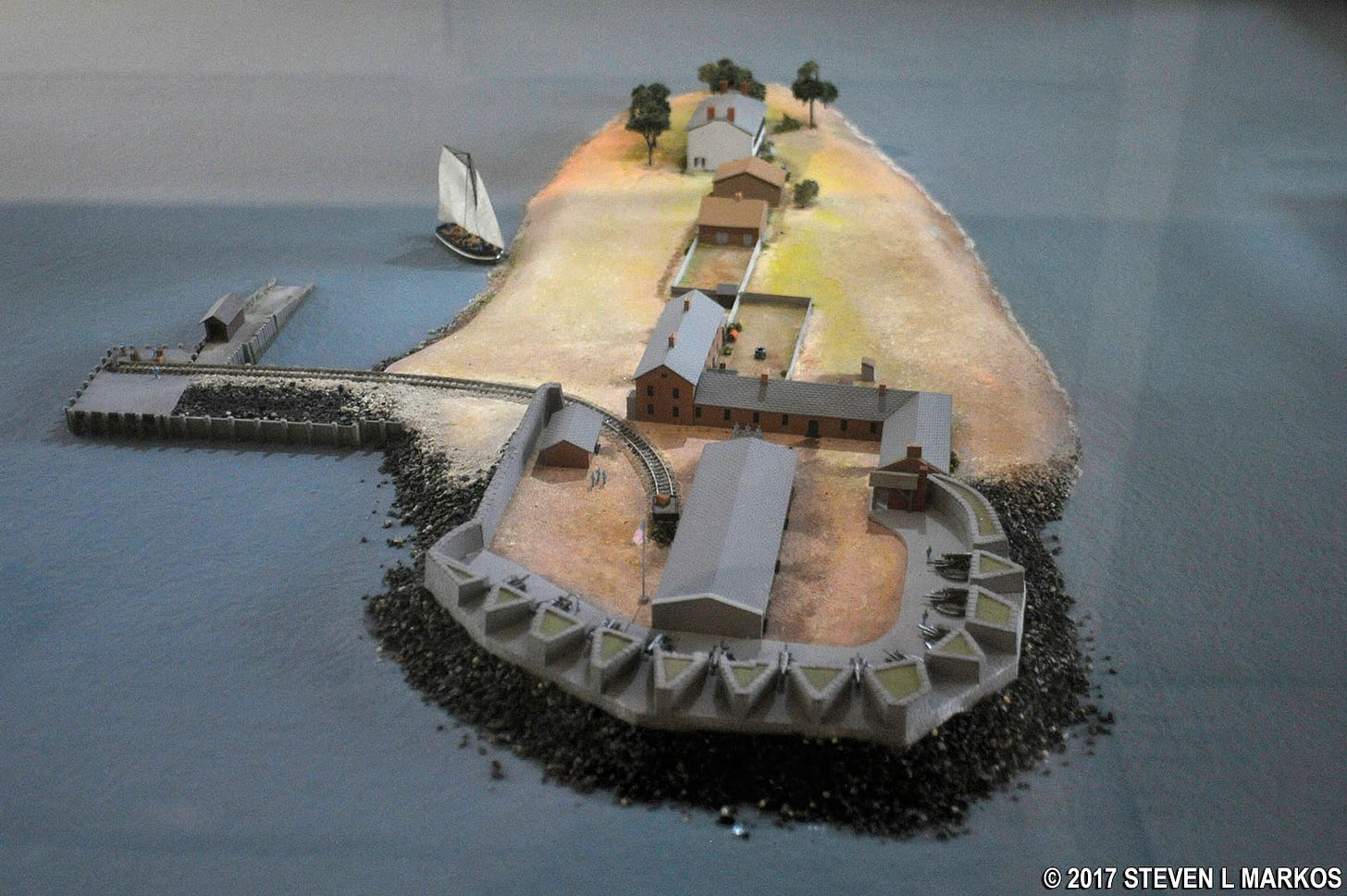Let It Dive
- Ellis Island Series: Fort Gibson
- Yanks Week 13 Notes
- YouTube Rabbithole
Alright @YouTheReader,
Today’s tune is Let It Dive by …AYWKUBTTOD.
This is another song off the iconic MVP Baseball 2005 soundtrack.
The name of the band is actually ...And You Will Know Us by the Trail of Dead.
I don’t know what MVP Baseball 2005 was trying to sell us on, but don’t care, this song still rocks and sounds great.
Moving on to Stumblin’ Along…
Way before immigrants stepped foot on Ellis Island and before Europe colonized the Americas, what is today New York City was inhabited by the Lenape Tribe (which was translated to Delaware in English). When the Europeans first arrived, the Lenape Nation ruled southern portions of New York, Connecticut, New Jersey, eastern Pennsylvania, and northern Delaware. While the Native American tribe never used the island as a permanent village, the Lenape would use the land as a station to prepare food, make tools, and work on animal hides. Although the Lenape Nation was forced to move north and west, their ancestral remains and artifacts were discovered in the mid-1980s. The remains and artifacts were transferred to the Delaware Nation of today.
The island had plenty of names before Ellis. Native Americans referred to it as “Kioshk,” meaning Gull Island, because it was usually flocked with seagulls. In 1630, the Dutch bought the land during the formation of New Netherland. Today’s Ellis Island, Liberty Island, and Black Tom Island were then known as the Oyster Islands. Aside from seagulls, oysters were abundant in the area. Little Oyster Island would change its name to Gibbet Island in the 1760s. A “gibbet” was a device used for public displays of hangings. A pretty brutal name, Gibbet Island got its name because pirates would be hanged with chains from scrubby trees.
On January 20, 1775, Gibbet Island was purchased by a Welsh-American by the name of Samuel Ellis. It’s impossible to tell much about this Samuel Ellis, because there were two men of the same name who were both wealthy enough to own the land and were married to a Mary. One of them was a butcher who lived on Greenwich Street in the Lower East Side. The other was a merchant in Manhattan, who also owned a farm in New Jersey. Both of these men signed a petition of loyalty to Britain during the American Revolution, and whoever owned the island established a tavern for fishermen. Samuel Ellis would pass away in 1794 and leave Ellis Island to his unborn grandson, even though he had three daughters. Things got complicated in the will when the child sadly died in infancy around 1800. The complicated situation even threw off the US Navy, which was keen on purchasing Ellis Island to fortify its defenses against the English in the event of another war. Matt Housch, a historian for the Statue of Liberty National Monument and Ellis Island, told the BBC News, "A fee of $10,000 was agreed, but nobody seemed to be too sure who it should be paid to. Then as now, the ancestry is a bit of a mystery."

Between 1801 and 1811, a fort was constructed on Ellis Island. During the War of 1812, British soldiers were held captive on the site, but the fort was never attacked. In 1814, the fort was named after Colonel James Gibson, who was a 33-year-old officer killed in the war’s Battle of Fort Erie. Fort Gibson was armed with 13 cannons and could garrison nearly 200 soldiers. The exterior wall of Fort Gibson was about 5.5 feet thick and sixteen feet high. They also had a 2nd wall in the interior of the fort, which is still present today.
Fort Gibson was preemptively built a few years before the outbreak of the War of 1812 because the US was being bullied on its trade routes. The British Navy was seizing American merchant ships and then forcing the sailors into service on British vessels. Congress decided that the nation’s most crucial harbor needed to be defended in the case of war. Fort Gibson wasn’t the only island in the harbor geared up to battle, as the island where the Statue of Liberty now stands was also ready for smoke. Between Fort Gibson and Fort Wood (what Liberty Island was named), it became quite a gauntlet and deterred attacks on New York’s harbor. Colonel Jonathan Williams reported to the Common Council of the City of New York in 1807, “It would be difficult to go into either the North or East River, without passing within point-blank shot of one of them. It is not a very bold assertion to say that no ship that sails upon the ocean would engage in such terms.”

In the decades following the 2nd American-British War, Fort Gibson continued to be used for military purposes. Large supply chamber magazines were built to store black powder, which was too dangerously unstable to be kept at the Naval Shipyard in Brooklyn. During the American Civil War, the fort once again became very important in protecting New York’s harbor. Twelve new cannons were installed, as it housed approximately 120 army and navy personnel.

























